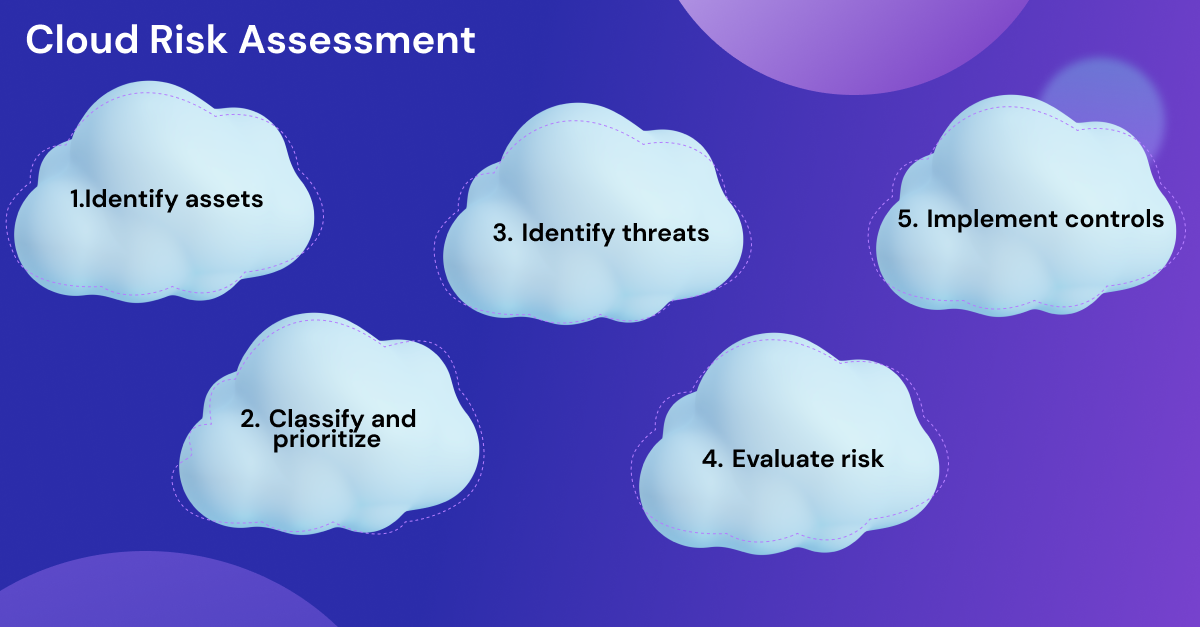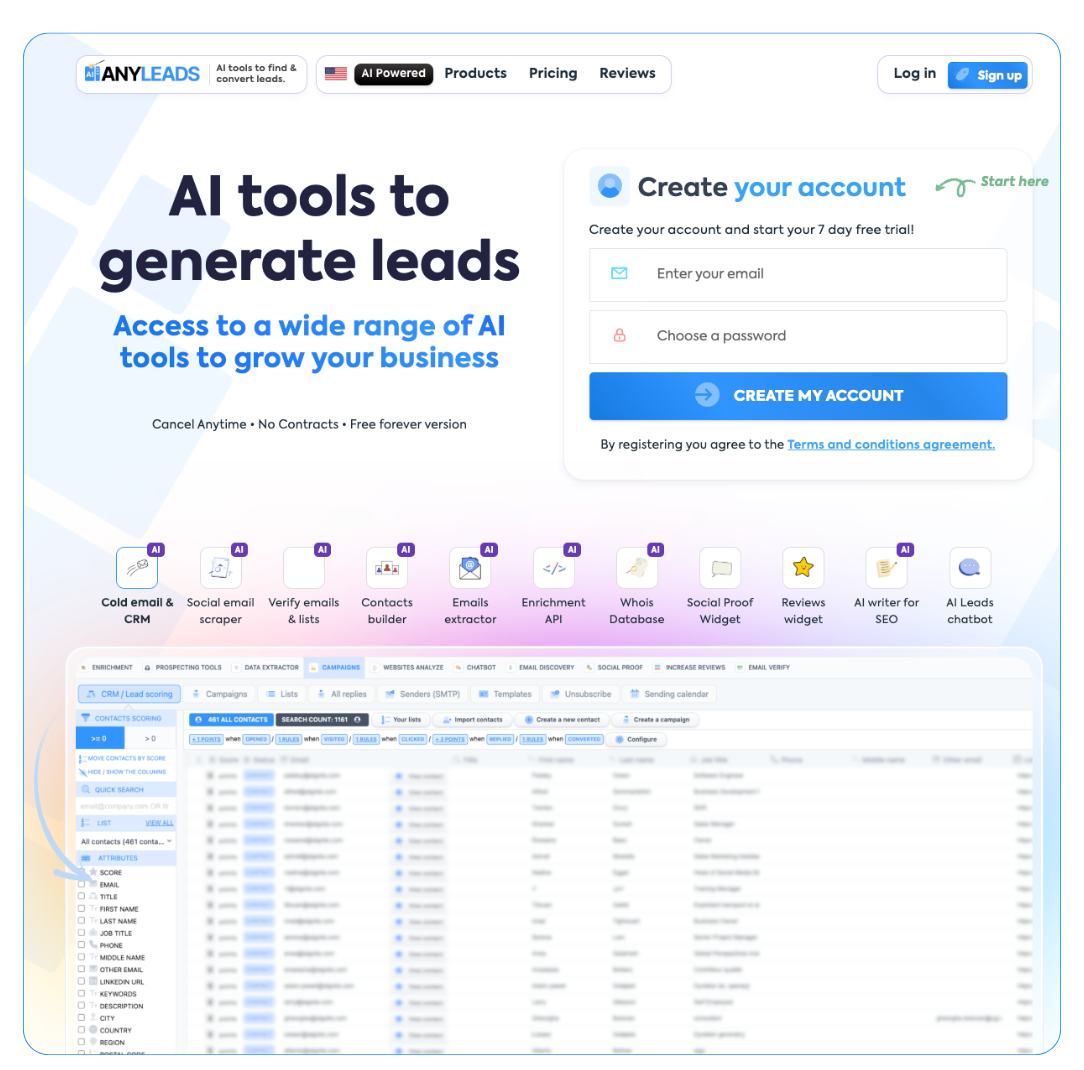 LIMITED SPOTS
All plans are 30% OFF for the first month! with the code WELCOME303
LIMITED SPOTS
All plans are 30% OFF for the first month! with the code WELCOME303

 LIMITED SPOTS
All plans are 30% OFF for the first month! with the code WELCOME303
LIMITED SPOTS
All plans are 30% OFF for the first month! with the code WELCOME303


According to a Gartner article, by 2025, 99% of cloud security failures will be the customer’s fault due to either a lack of visibility or misconfigurations. With the dangers of misconfigurations, identity risks, and shadow IT, there has never been a more critical time to invest in cloud risk assessment tools and services.
This article will outline the eight essential tools that top enterprises commonly utilize to assess cloud risk and compliance across AWS, Azure, GCP, and hybrid environments. This list was curated after thoroughly assessing 40+ products on software marketplaces, peer review sites, and recent vendor product roadmaps.
We’ve compiled detailed profiles for the eight top cloud security assessment tools, documenting their key features, strengths, and weaknesses, along with ideal user profiles.
WIZ is a contemporary cloud security platform that provides full-stack, agentless visibility of your entire cloud environment, including all infrastructure, workloads, identities, and data.
Created for multi-cloud environments, Wiz visualizes and prioritizes key risks, correlating them across layers (e.g., compute, network, identity, data), provides real-time asset risk, and prioritizes remediation based on exploitability and business impact.
Agentless architecture that is very quick to deploy or install (under 15 minutes), resulting in zero performance overhead.
Cross-layer correlations (such as compute, network, identity, data) allow scenario-based platform context.
Unmatched compliance inbuilt for CIS, NIST, GDPR, HIPAA, SOC 2, etc.
Very high rate of accuracy (low false-positive rate) and is liked by 94% of reviewers on G2.
Seamless integration with CI/CD pipeline and DevOps workflows.
Limited on-premise support as it is focused exclusively on Cloud.
As it is enterprise-focused, pricing can be a bit steep for small teams.
Wiz’s Risk Graph maps the relationships between vulnerabilities, misconfigurations, identities, and exposed data to find the most exploitable risks. This contextual intelligence makes Wiz much better than point-solution scanners.
Great for enterprises leveraging complex multi-cloud environments (AWS, Azure, GCP, OCI), DevSecOps teams, and security leaders seeking prioritized, actionable risk information, with zero agents deployed for the risk assessment. Great for organizations rapidly moving to the Cloud.


Prisma Cloud is a renowned Cloud-Native Application Protection Platform (CNAPP) that combines CSPM, CWP, CIEM, and data security in a single pane of glass, working like a charm on multi-cloud environments and enabling deep integration with DevOps and CI/CD pipelines.
Widely regarded as the broadest coverage of cloud security assessment services and compliance frameworks of any CNAPP environment.
Strong (and expanding) DevOps integration through Terraform, Kubernetes, and CI/CD tools.
Excellent capabilities for securing containers and serverless environments.
Unified policy engine provides streamlined governance capabilities at scale.
Steep learning curve for new users.
Some users reported slow performance with large-scale installations.
Varies significantly by region in responsiveness of customer support.
Unified policy management, their proprietary engine across CSPM, CWP, CIEM, and data security to eliminate configuration drift and policy sprawl. The growing number and significance of data security requirements in the current landscape makes such tools critical for businesses.
Large enterprises that have mature DevOps activities and hybrid environments. Best suited for organizations already working with Palo Alto's broader security ecosystem.
Microsoft's Defender for Cloud offers a cloud-native security solution, providing cyber threat protection, security posture management, and compliance monitoring across Azure, AWS, and GCP.
Deeply integrated with Azure services and Microsoft 365.
Cost effective for Azure-centric organizations.
Built-in threat detection from Microsoft’s global threat intelligence.
Simplicity of licensing and billing via Azure subscriptions.
It is less mature for non-Azure environments (though AWS/GCP support is evolving).
Fewer integrations with third-party solutions than stand-alone tools.
Some advanced functionality is part of the Premium tier.
Defender’s secure score is a quantifiable measure of your cloud security posture with actionable recommendations for improvement.
Organizations heavily invested in the Microsoft ecosystem and/or leveraging Azure as their primary cloud provider.
Tenable Cloud Security offers continuous visibility into vulnerabilities, misconfigurations, and compliance in the Cloud. It has integrations with Tenable.io and Nessus that enable the creation and extension of the vulnerability management program to the Cloud.
Strong integration into Tenable's vulnerability management ecosystem.
Excellent compliance reporting (CIS, NIST, ISO 27001).
Robust asset inventory and risk scoring.
Multi-cloud and hybrid support.
The user interface feels dated compared to newer cloud platforms.
Longer time-to-value than agentless leaders.
Less focus on identity and data visibility.
It's vulnerability-centric cloud security that integrates traditional vulnerability management with cloud posture, suitable for teams already using Tenable.
Organizations that already have a deployed Tenable.io and cloud deployments and want to extend their VM programs to the Cloud.


Lacework, now part of FortiCNAPP, is a platform for securing cloud environments with behavioral analytics that detects threats and misconfigurations. Instead of addressing hybrid cloud issues, Lacework focuses on securing workloads, providing cloud posture management, and determining anomalies in the environment.
The Polygraph Data Platform offers in-depth behavioral analysis.
Robust anomaly detection for insider threats and lateral movement.
Offers both agent and agentless deployment options.
Performance is good with both serverless and container workloads.
Can create a lot of noise if not tuned properly.
The UI can be messy when users first interact with it.
Pricing models based on workload count can get expensive.
Lacework’s behavioral analytics engine, which continuously learns the expected behavior of a cloud and detects when it deviates, helping limit reliance on static rules.
Mid-to-large enterprises with dynamic cloud workloads who want to employ advanced threat detection beyond simple configuration checks.
Orca Security is a no-agent cloud security platform that provides full-stack visibility at the workload level with cloud-native asset scanning. It identifies risks in configurations, vulnerabilities, compliance, and identity by scanning.
No-agent scanning that deep inspects VMs, containers, and serverless functions.
Deep risk prioritization with business impact scoring.
Excellent attack path visualization.
Rapid deployment and value delivery.
Limited on-premise support noted by users.
Gap in some IAM risk detection indicated by users.
Lacks sufficient integrations compared to Wiz and Prisma.
Its SideScanning ability to inspect cloud disk snapshots without agents facilitates deep inspection without loss of performance.
Cloud-first organizations that want to get started quickly, want deep visibility without agents, and are geared to rapid DevOps process and cloud security assessments.
Falcon Cloud Security enhances CrowdStrike's endpoint protection capabilities in the Cloud, offering Cloud Security Posture Management (CSPM), Cloud Workload Protection (CWP), Cloud Infrastructure Entitlement Management (CIEM), and data security that prioritizes identity and workload protection.
Utilizes CrowdStrike's industry-leading threat intelligence.
This capability enables the identification and mitigation of identity and access management (IAM) risks.
It has a unified console that integrates with nearly every CrowdStrike Falcon endpoint protection capability.
Attempts to stop threats when they attempt to access your environment.
Newer than legacy players.
Has fewer compliance templates compared to its competitors.
Needs Falcon agents on workload or environment to provide complete protection solutions.
The Identity Threat Protection module detects and stops identity-based attacks, such as privilege escalation and credential theft, in the Cloud.
Organizations that already deployed CrowdStrike protection at the endpoint and wish to consolidate the workloads and cloud security they invest in with minimal overhead.


Drata is an automated compliance management tool that monitors Cloud and SaaS ecosystems to fetch evidence of controls. It supports businesses of all sizes to attain and maintain certifications such as SOC 2, ISO 27001, HIPAA, and others.
No code integrations to 100+ tools (AWS, Azure, GCP, Slack, Zoom, etc.).
Automated evidence collection and monitoring of controls.
Dashboards in real-time, and audit-ready reports.
Ideal for startups and mid-market organizations.
Not a full-fledged security tool (no threat detection or vulnerability scanning).
Low technical depth for highly-skilled security teams.
Less ideal for larger enterprises that have specific requirements for custom compliance.
Their Compliance Automation Engine automatically collects, organizes, and maintains compliance evidence across Cloud and SaaS platforms.
Startups, mid-market companies, and compliance teams looking to achieve and maintain certifications with little or no manual effort.
The tools discussed here are all best-of-breed tools for cloud risk assessment and compliance in 2025. However, the "right" tool depends entirely on your unique business needs!
Wiz offers agentless architecture and Risk Graph, making it an excellent choice for enterprises requiring rapid unified visibility.
Prisma Cloud will offer the broadest range of features relevant to mature DevSecOps teams.
Drata can completely revolutionize the compliance automation landscape, particularly for startups.
Tenable Cloud Security bridges the gap between traditional vulnerability management and cloud posture management.
Defender for Cloud and AWS Security Hub are solid native options for cloud-native organizations.
Overall, instead of chasing the "top" tool, consider finding what aligns first: Does it fit your stack? Will it eliminate noise and let you prioritize clear risks? Can your team pick it up and get things done pronto? In addition to cloud risk assessment tools, organizations should also invest in robust insider threat detection solutions. These systems can identify suspicious user behavior, detect unauthorized data access, and mitigate risks posed by internal actors, ensuring comprehensive protection across both external and internal threat vectors.
By getting your priorities (speed, compliance, DevOps fit, or threat detection) straight, you can find the tool that protects your Cloud and helps your team move faster, safer, and with confidence.